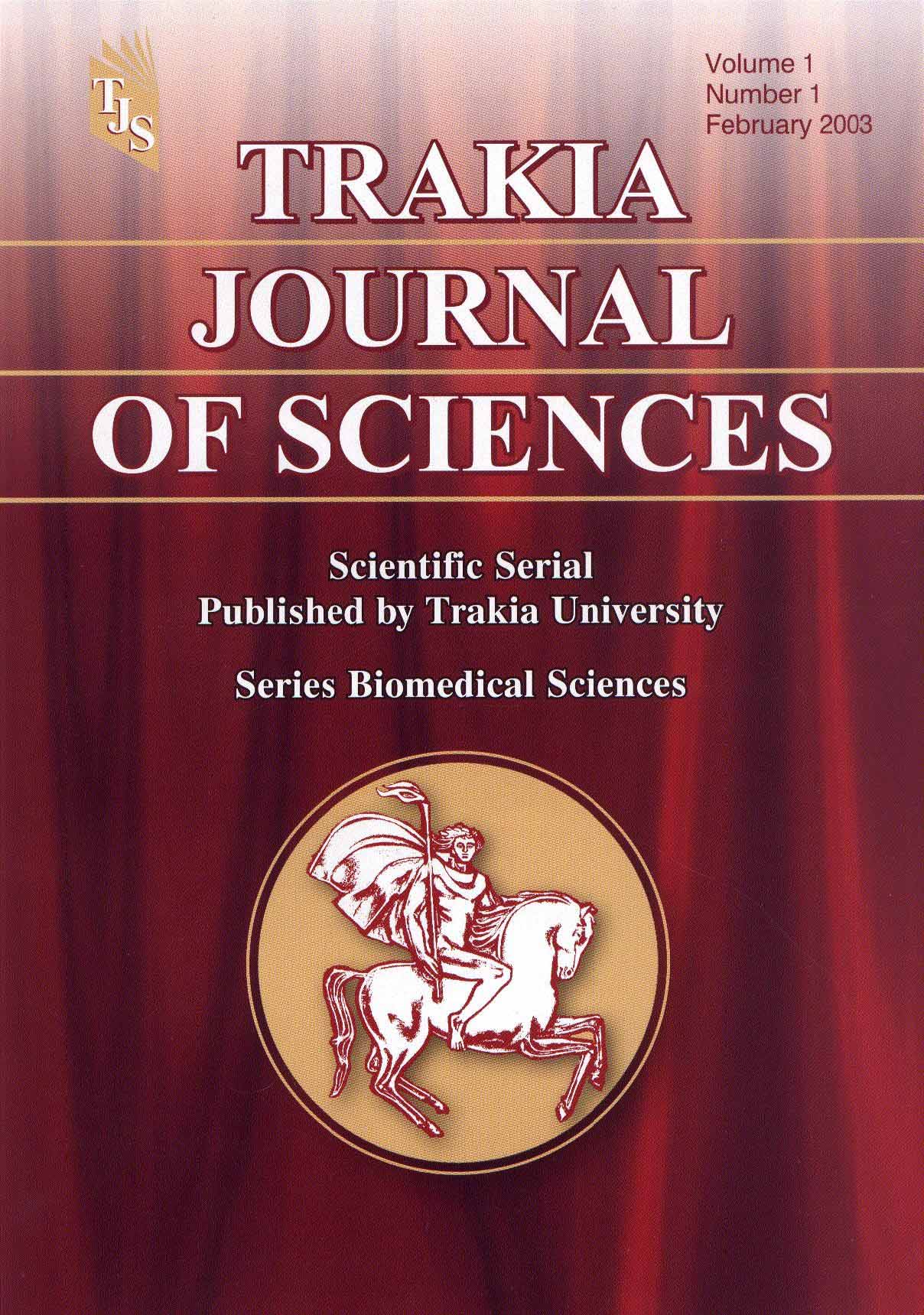HISTOLOGICAL CHANGES IN SPONTANEOUS RUPTURE OF THE CRANIAL CRUCIATE LIGAMENT IN THE DOG
DOI:
https://doi.org/10.15547/tjs.2024.01.004Keywords:
Dog, cruciate ligament, histological changes, score systemAbstract
Introduction and aim of the work: The rupture of the cranial cruciate ligament (CrCL) is among the most common causes of pelvic limb lameness in dogs. The objective of this study was to investigate the histological changes in dogs with cranial cruciate ligament rupture and to compare the result using three different score systems
Materials and Methods: The study cohort comprised of 30 dogs of various breeds, ages, genders and body weights with spontaneous cranial cruciate ligament rupture divided into 3 groups (1 week, 2 weeks and 3 weeks’ post-rupture). All tissue samples from CrCL were collected after open medial or lateral arthrotomy and histology slides were prepared and stained with hematoxylin-eosin. Three different score systems were used for grading the histological changes-synovitis score modified Bonar and modified Vasseur score.
Results: Our results showed that no inflammatory cells were observed in groups II and III and a very limited number in group I. We also found the highest erythrocytes deposition and larger lumen of blood vessels, uneven arrangement of the collagen fibers as well as fibrocytes transformation into chondrocytes in group I. In group II multiple blood vessel were also filled with erythrocytes and the number of chondrocytes is increased in comparison to group I. In group III blood vessels size and number were reduced in comparison to group I and II and many sections of the collagen fibers showed hyalinization.
Conclusion: In summary, degenerative changes were seen in all samples examined of cranial cruciate ligaments with different grades of chondroid metaplasia, increased cellularity and vascularity. Inflammatory changes were rarely detected by lymphoplasmacytic infiltrates with or without lymphoid aggregate deposition. No correlation was noted between age and all histological scores.
References
Witsberger T, Armando Villamil J, Schultz L, Hahn A, Cook J. Prevalence of and risk factors for hip dysplasia and cranial cruciate ligament deficiency in dogs. J Am Vet Med Assoc, 232, 1818–1824, 2008.
Warnock J, Duerr F. Stifle Region. In Canine Lameness, 1st ed, Duerr, F., Ed.; John Wiley & Sons: Hoboken, NJ, USA, 307–346, 2019.
Hayes G, Langley-Hobbs S, Jeffery N. Risk factors for medial meniscal injury in association with cranial cruciate ligament rupture. J Small Anim Pract, 51(12):630–634, 2010.
Arnoczky S, Marshall J. The cruciate ligaments of the canine stifle: An anatomical and functional analysis. Am J Vet Res, 38(11), 1807–1814, 1977.
Clark J, Sidles J. The interrelation of fiber bundles in the anterior cruciate ligament. J of Ortho Res, 8, 180–188, 1990.
Heffron L, Campbell J. Morphology, histology and functional anatomy of the canine cranial cruciate ligament. Vet Rec, 102: 280–283, 1978.
Alm A, Strömberg B. Vascular anatomy of the patellar and cruciate ligaments. A microangiographic and histologic investigation in the dog. Acta Chir Scand Suppl, 445:25–35, 1974.
Yahia L, Drouin G. Microscopical investigation of canine anterior cruciate ligament and patellar tendon: Collagen fascicle morphology and architecture. J Orthop Res, 7:243–251, 1989.
de Rooster H, de Bruin T, van Bree H. Morphologic and functional features of the canine cruciate ligaments, Vet Surg, 35(8):769-80, 2006.
Hayashi K., Frank J, Dubinsky C, et al. Histologic changes in ruptured canine cranial cruciate ligament. Vet Surg, 32:269–277, 2003a.
Petersen W, Tillmann B. Structure and vascularization of the cruciate ligaments of the human knee joint. Anatomy and Embryology, 200:325–334, 1999.
Arnoczky SP, Rubin RM, Marshall JL. Microvasculature of the cruciate ligaments and its response to injury. An experimental study in dogs. The J of Bone and Joint Surg, 61A: 1221–1229, 1979
Kobayashi S, Baba H, Uchida K, et al. Microvascular system of anterior cruciate ligament in dogs. J of Ortho Res, 24: 1509–1520, 2006.
Murray MM, Current status and potential of primary ACL repair. Clinics in Sports Medicine, 28(01):51–61, 2009.
Fearon A, Dahlstrom J, Twin J, Cook J, Scott A. The Boner score revisited: Region of evaluation significantly influences the standardized assessment of tendon degeneration. J Sci Med Sport, 17(4): 346–350, 2014.
Smith KD, Clegg PD, Innes JF, Comerford EJ. Elastin content is high in the canine cruciate ligament and is associated with degeneration. The Veterinary Journal, 199(01):169–174, 2014.
Cook JL, Kuroki K, Visco D, et al. The OARSI histopathology initiative- recommendations for histological assessments of osteoarthritis in the dog. Osteoarthritis Cartilage, 18(suppl 3): S66–S79, 2010.
Smith KD, Vaughan-Thomas A, Spiller DG, et al. Variations in cell morphology in the canine cruciate ligament complex. The Veterinary Journal, 193: 561–566, 2012.
Vasseur PB, Pool RR, Arnoczky SP, et al. Correlative biomechanical and histologic study of the cranial cruciate ligament in dogs. Am J Vet Res, 46: 1842–1854, 1985.
Comerford EJ, Tarlton JF, Wales A, Bailey AJ, Innes JF. Ultrastructural differences in cranial cruciate ligaments from dogs of two breeds with a differing predisposition to ligament degeneration and rupture. J Comp Pathol, 134, 8-16, 2006.
Hayashi K, Frank JD, Hao Z, et al. Evaluation of ligament fibroblast viability in ruptured cranial cruciate ligament of dogs. Am J Vet Res, ,64: 1010–1016, 2003b.
Takai S, Woo SL, Livesay GA, Adams DJ, Fu FH. Determination of the in situ loads on the human anterior cruciate ligament. J Orthop Res, 11, 686–695, 1993.
Gyger O, Botteron C, Doherr M, Zurbriggen A, Schawalder P, Spreng D. Detection and distribution of apoptotic cell death in normal and diseased canine cranial cruciate ligaments. The Veterinary Journal, 174, 371–377, 2007.
Krayer M, Rytz U, Oevermann A, Doherr MG, Forterre F, Zurbriggen A, Spreng DE. Apoptosis of ligamentous cells of the cranial cruciate ligament from stable stifle joints of dogs with partial cranial cruciate ligament rupture. Am J Vet Res, 69, 625–630, 2008.
Zachos TA, Arnoczky SP, Lavagnino M, Tashman S. The effect of cranial cruciate ligament insufficiency on caudal cruciate ligament morphology: An experimental study in dogs. Vet Surg, 31, 596-603, 2002.
Barrett JG, Hao Z, Graf BK, Kaplan LD, Heiner JP, Muir P. Inflammatory changes in ruptured canine cranial and human anterior cruciate ligaments. Am J Vet Res, 66, 2073-2080, 2005.
Hayashi K, Manley PA, Muir P. Cranial cruciate ligament pathophysiology in dogs with cruciate disease: a review. J Am Anim Hosp Assoc, 40, 385-390, 2004.
Kuroki K, Williams N, Ikeda H, Bozynski CC, Leary E, Cook JL. Histologic assessment of ligament vascularity and synovitis in dogs with cranial cruciate ligament disease. Am J Vet Res, 80(2):152-158, 2019.
Muir P, Schamberger GM, Manley PA, et al. Localization of Cathepsin K and Tartrate-resistant acid phosphatase in synovium and cranial cruciate ligament in dogs with cruciate disease. Vet Surg, 34:239–246, 2005.
Döring A.-K, Junginger J, Hewicker-Trautwein M. Cruciate ligament degeneration and stifle joint synovitis in 56 with intact cranial cruciate ligaments: correlation of histological findings and numbers and phenotypes of inflammatory with age, body weight and breed. Vet Immunol Immunopathol, 196, 5–13, 2017.

Downloads
Published
Issue
Section
License
Copyright (c) 2024 Trakia University

This work is licensed under a Creative Commons Attribution-NonCommercial 4.0 International License.


